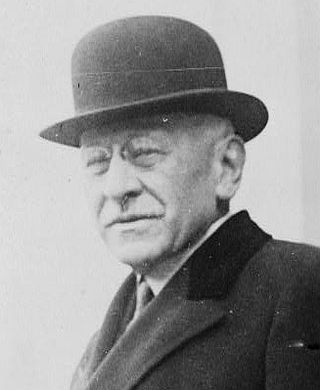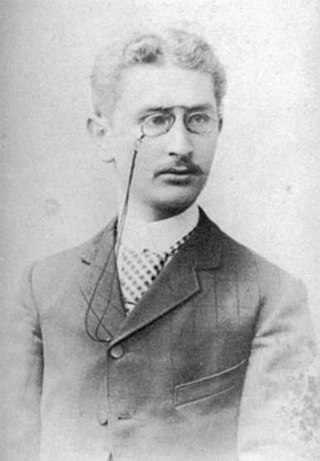
Otorhinolaryngology is a surgical subspeciality within medicine that deals with the surgical and medical management of conditions of the head and neck. Doctors who specialize in this area are called otorhinolaryngologists, otolaryngologists, head and neck surgeons, or ENT surgeons or physicians. Patients seek treatment from an otorhinolaryngologist for diseases of the ear, nose, throat, base of the skull, head, and neck. These commonly include functional diseases that affect the senses and activities of eating, drinking, speaking, breathing, swallowing, and hearing. In addition, ENT surgery encompasses the surgical management of cancers and benign tumors and reconstruction of the head and neck as well as plastic surgery of the face, scalp, and neck.

Streptococcal pharyngitis, also known as streptococcal sore throat, is pharyngitis caused by Streptococcus pyogenes, a gram-positive, group A streptococcus. Common symptoms include fever, sore throat, red tonsils, and enlarged lymph nodes in the front of the neck. A headache and nausea or vomiting may also occur. Some develop a sandpaper-like rash which is known as scarlet fever. Symptoms typically begin one to three days after exposure and last seven to ten days.

Palatine tonsils, commonly called the tonsils and occasionally called the faucial tonsils, are tonsils located on the left and right sides at the back of the throat, which can often be seen as flesh-colored, pinkish lumps. Tonsils only present as "white lumps" if they are inflamed or infected with symptoms of exudates and severe swelling.

Tonsillectomy is a surgical procedure in which both palatine tonsils are fully removed from the back of the throat. The procedure is mainly performed for recurrent tonsillitis, throat infections and obstructive sleep apnea (OSA). For those with frequent throat infections, surgery results in 0.6 fewer sore throats in the following year, but there is no evidence of long term benefits. In children with OSA, it results in improved quality of life.

Anna Louise Day Hicks was an American politician and lawyer from Boston, Massachusetts, best known for her staunch opposition to desegregation in Boston public schools, and especially to court-ordered busing, in the 1960s and 1970s. A longtime member of Boston's school board and city council, she served one term in the United States House of Representatives, succeeding Speaker of the House John W. McCormack.

Adenoidectomy is the surgical removal of the adenoid for reasons which include impaired breathing through the nose, chronic infections, or recurrent earaches. The effectiveness of removing the adenoids in children to improve recurrent nasal symptoms and/or nasal obstruction has not been well studied. The surgery is less commonly performed in adults in whom the adenoid is much smaller and less active than it is in children. It is most often done on an outpatient basis under general anesthesia. Post-operative pain is generally minimal and reduced by icy or cold foods. The procedure is often combined with tonsillectomy, for which the recovery time is an estimated 10–14 days, sometimes longer, mostly dependent on age.

Julius Rosenwald was an American businessman and philanthropist. He is best known as a part-owner and leader of Sears, Roebuck and Company, and for establishing the Rosenwald Fund, which donated millions in matching funds to promote vocational or technical education. In 1919 he was appointed to the Chicago Commission on Race Relations. He was also the principal founder and backer for the Museum of Science and Industry in Chicago, to which he gave more than $5 million and served as president from 1927 to 1932.

Tonsillitis is inflammation of the tonsils in the upper part of the throat. It can be acute or chronic. Acute tonsillitis typically has a rapid onset. Symptoms may include sore throat, fever, enlargement of the tonsils, trouble swallowing, and enlarged lymph nodes around the neck. Complications include peritonsillar abscess (Quinsy).

Tonsil stones, also known as tonsilloliths, are mineralizations of debris within the crevices of the tonsils. When not mineralized, the presence of debris is known as chronic caseous tonsillitis (CCT). Symptoms may include bad breath, foreign body sensation, sore throat, pain or discomfort with swallowing, and cough. Generally there is no pain, though there may be the feeling of something present. The presence of tonsil stones may be otherwise undetectable, however some people have reported seeing white material in the rear of their throat.

Mount Sinai Hospital, founded in 1852, is one of the oldest and largest teaching hospitals in the United States. It is located in East Harlem in the New York City borough of Manhattan, on the eastern border of Central Park stretching along Madison and Fifth Avenues, between East 98th Street and East 103rd Street. The entire Mount Sinai health system has over 7,400 physicians, as well as 3,919 beds, and delivers over 16,000 babies a year.

Obstructive sleep apnea (OSA) is the most common sleep-related breathing disorder and is characterized by recurrent episodes of complete or partial obstruction of the upper airway leading to reduced or absent breathing during sleep. These episodes are termed "apneas" with complete or near-complete cessation of breathing, or "hypopneas" when the reduction in breathing is partial. In either case, a fall in blood oxygen saturation, a disruption in sleep, or both, may result. A high frequency of apneas or hypopneas during sleep may interfere with the quality of sleep, which – in combination with disturbances in blood oxygenation – is thought to contribute to negative consequences to health and quality of life. The terms obstructive sleep apnea syndrome (OSAS) or obstructive sleep apnea–hypopnea syndrome (OSAHS) may be used to refer to OSA when it is associated with symptoms during the daytime.

Uvulopalatopharyngoplasty is a surgical procedure or sleep surgery used to remove tissue and/or remodel tissue in the throat. This could be because of sleep issues. Tissues which may typically be removed include:

The tonsils are a set of lymphoid organs facing into the aerodigestive tract, which is known as Waldeyer's tonsillar ring and consists of the adenoid tonsil, two tubal tonsils, two palatine tonsils, and the lingual tonsils. These organs play an important role in the immune system.
Triplegia is a medical condition characterized by the paralysis of three limbs. While there is no typical pattern of involvement, it is usually associated with paralysis of both legs and one arm—but can also involve both arms and one leg. Triplegia can sometimes be considered a combination of hemiplegia overlaying diplegia, or as quadriplegia with less involvement in one extremity.
Focal infection theory is the historical concept that many chronic diseases, including systemic and common ones, are caused by focal infections. In present medical consensus, a focal infection is a localized infection, often asymptomatic, that causes disease elsewhere in the host, but focal infections are fairly infrequent and limited to fairly uncommon diseases. Focal infection theory, rather, so explained virtually all diseases, including arthritis, atherosclerosis, cancer, and mental illnesses.
Laurie Hollis Glimcher is an American physician-scientist who was appointed president and CEO of Dana–Farber Cancer Institute in October 2016. She was elected a Member of the American Philosophical Society in 2019.

Max Talmey (1869–1941) was an American ophthalmologist of Jewish-Lithuanian descent, best known as Albert Einstein's tutor who introduced him to fields of and books on natural science and philosophy, for his success in treating cataracts, and for his work on auxiliary languages.
Sleep surgery is a surgery performed to treat sleep disordered breathing. Sleep disordered breathing is a spectrum of disorders that includes snoring, upper airway resistance syndrome, and obstructive sleep apnea. These surgeries are performed by surgeons trained in otolaryngology, oral maxillofacial surgery, and craniofacial surgery.

Coblation tonsillectomy is a surgical procedure in which the patient's tonsils are removed by destroying the surrounding tissues that attach them to the pharynx. It was first implemented in 2001. The word coblation is short for ‘controlled ablation’, which means a controlled procedure used to destroy soft tissue.
The Tonsil Hospital, which opened in 1921 and closed in 1946, was a Manhattan specialized hospital dedicated to just one task: "remove the tonsils and adenoids of poor children" when the need seemed to exist.














